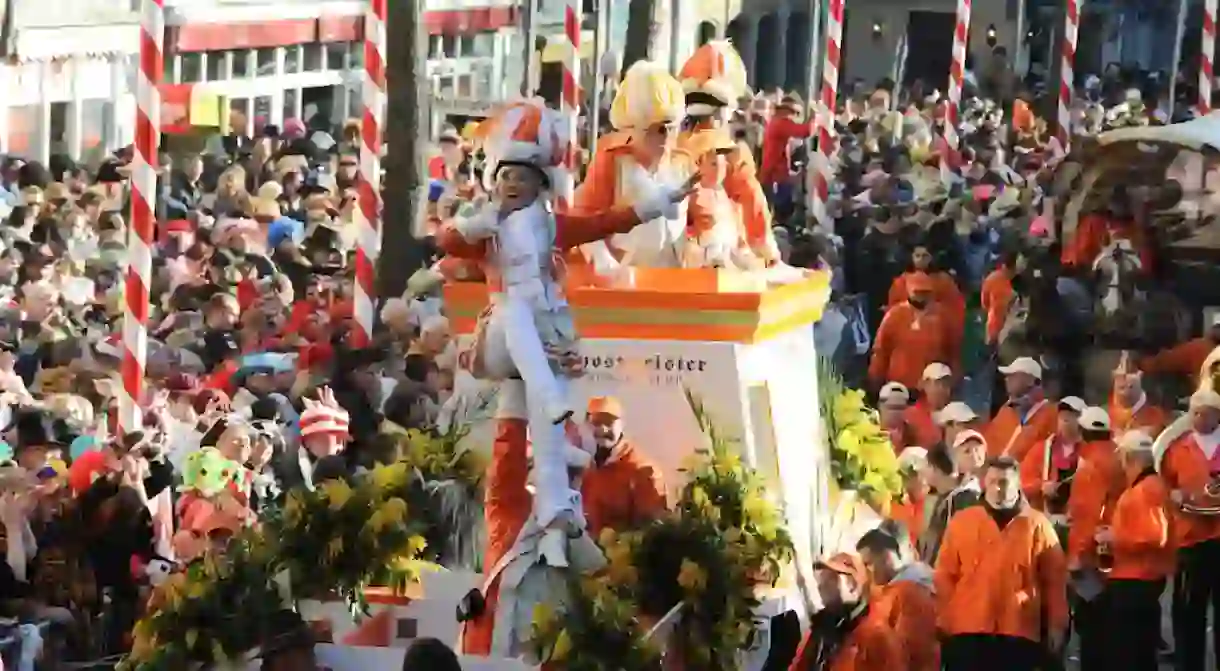Everything You Need to Know About Cologne's Carnival

Cologne celebrates the week before Lent with Germany’s maddest festival. Millions of Carnival revellers dressed in fancy dress conquer the city for a week-long celebration. Here’s a list of things you need to know about this crazy party.
It’s the fifth season
Cologners don’t simply structure their year around winter, spring, summer and autumn, but add a fifth season to their calendar. Each year on November 11, at 11:11 am, the Carnival season is rung in at the old town market square and a subsequent giant street party spreads across the entire city. Carnival sessions, parties and concerts are on the agenda all the way through to February or March, with the exception of the Advent season and Christmas holidays, and culminate in a week-long party between Fat Thursday and Ash Wednesday.

Kölle Alaaf!
During the festivities, you’ll hear people shout Kölle Alaaf! at every opportunity. The official Carnival slogan can be loosely translated to ‘Cologne above all’ and goes back to around 1550 when it was used as toast and cheer. Don’t make the mistake of saying Helau! instead, the Carnival exclamation of Cologne’s rival city Dusseldorf.
Costumes are mandatory
Fancy dress is essential if you want to partake in the madness. Cologners give it all when choosing their outfit for the upcoming season, and a lot of them are on cosplay-level. If you don’t want to spend an excessive amount on a costume, pick up some face paint and a few accessories at one of the many fancy dress shops scattered across the city.

Kölsche Songs
Carnival would only be half the fun without the happy songs that blast from the speakers at every corner. Numerous bands write and produce dedicated Carnival songs each season, all sung in the local Kölsch accents and most of them proclaiming their love for the city and its people. Revellers, whether they know each other or not, link arms, full-throatedly sing along and collectively sway to and fro to the well-known songs.
The Dreigestirn
The main conductor of the festivities and embodiment of the Carnival spirit is the so-called Dreigestirn, a men’s trio dressed up as a prince, a peasant and a maiden. Wrapped in in pompous red-and-white costumes, the prince is addressed with Seine Tollheit (His madness), the peasant with Seine Deftigkeit (His Heftyness) and the maiden with Ihre Lieblichkeit (Her Loveliness). Candidates are on a waiting list for more than five years and undergo a lengthy application process before they eventually climb the Carnival throne.

The history
Cologne Carnival as we know it today has been celebrated for the past 190 years, though its origin traces way back. Already the Greeks and Romans put on sweeping festivities to welcome the springtime, and Germanic tribes celebrated the winter solstice to worship their gods and exile evil demons. Christians later adopted these customs and the Carnival season has rung in the pre-Eastern fasting period. The Venetian Carnival inspired the costumes, and in 1823, the ‘hero’ or prince of the Carnival climbed the throne for the first time.
The Rose Monday Parade
Rose Monday is the day where you should set the alarm, get up and head to the city centre – all dressed up in fancy dress, of course. At around 10:30 am, a parade of giant, decorated floats and more than 10,000 people marches through the city, dancing, blasting songs and throwing candy and flowers at the several million spectators.














